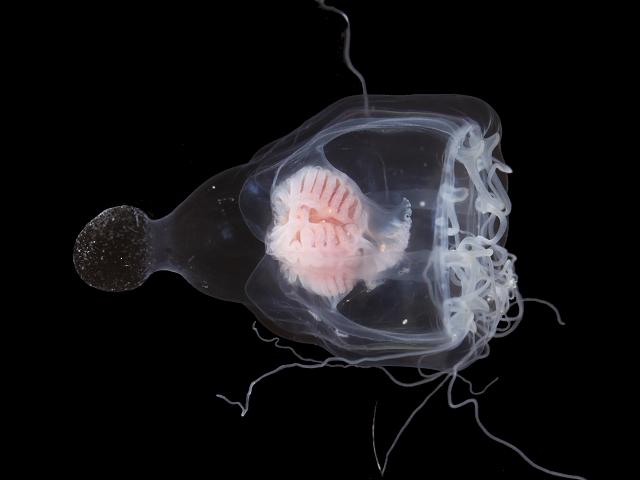
APHOTOMARINE
An educational resource dedicated mainly to the photography
and diversity of marine life that can be found in coastal waters
and intertidal areas of Great Britain and Ireland by David Fenwick.

Leuckartiara octona (Fleming, 1823) - A pandeid hydrozoan (Hydrozoa images)
Scroll down and rollover titles to change screen image or click on title to view image.
Pandeid hydrozoan
Leuckartiara octona
- lateral view 1
Leuckartiara octona
- lateral view 1
Pandeid hydrozoan
Leuckartiara octona
- dorsal view 1
Pandeid hydrozoan
Leuckartiara octona
- lateral view 2
Pandeid hydrozoan
Leuckartiara octona
- lateral view 3
Pandeid hydrozoan
Leuckartiara octona
- lateral view 4
Pandeid hydrozoan
Leuckartiara octona
- lateral view 5
Pandeid hydrozoan
Leuckartiara octona
- gonads 1
Pandeid hydrozoan
Leuckartiara octona
- retracted tentacles 1
Pandeid hydrozoan
Leuckartiara octona
- tentacles 1
Pandeid hydrozoan
Leuckartiara octona
- tentacles 2
Pandeid hydrozoan
Leuckartiara octona
- bell margin 1
Pandeid hydrozoan
Leuckartiara octona
- oral view 1
Pandeid hydrozoan
Leuckartiara octona
- lateral view 6
Pandeid hydrozoan
Leuckartiara octona
- lateral view group 1
Pandeid hydrozoan
Leuckartiara octona
- parasite possibly Opechona 1
Pandeid hydrozoan
Leuckartiara octona
- parasite possibly Opechona 2
Species found washed-up near the low tide mark at Sennen Cove, West Cornwall. 08.07.14. About twelve specimens were found washed-up. Species about 7-12 mm diameter. Specimen also found swimming around the marina at Newlyn, Cornwall. 07.06.15.
Leuckartiara octona is reported by Russell as being a second host of the trematode flatworm Opechona bacillaris (Molin, 1859) Dollfus, 1927. Many of the Leuckartiara octona specimens found at Sennen Cove contained very small trematode parasites.

The main objective of this website is in furthering environmental awareness and education through the medium of photography. To increase awareness and access to the wildlife of the region and help
people find and identify it. Sometimes the difference between species is obvious but many species can only be determined by observing microscopic characteristics that are specific to any one species.